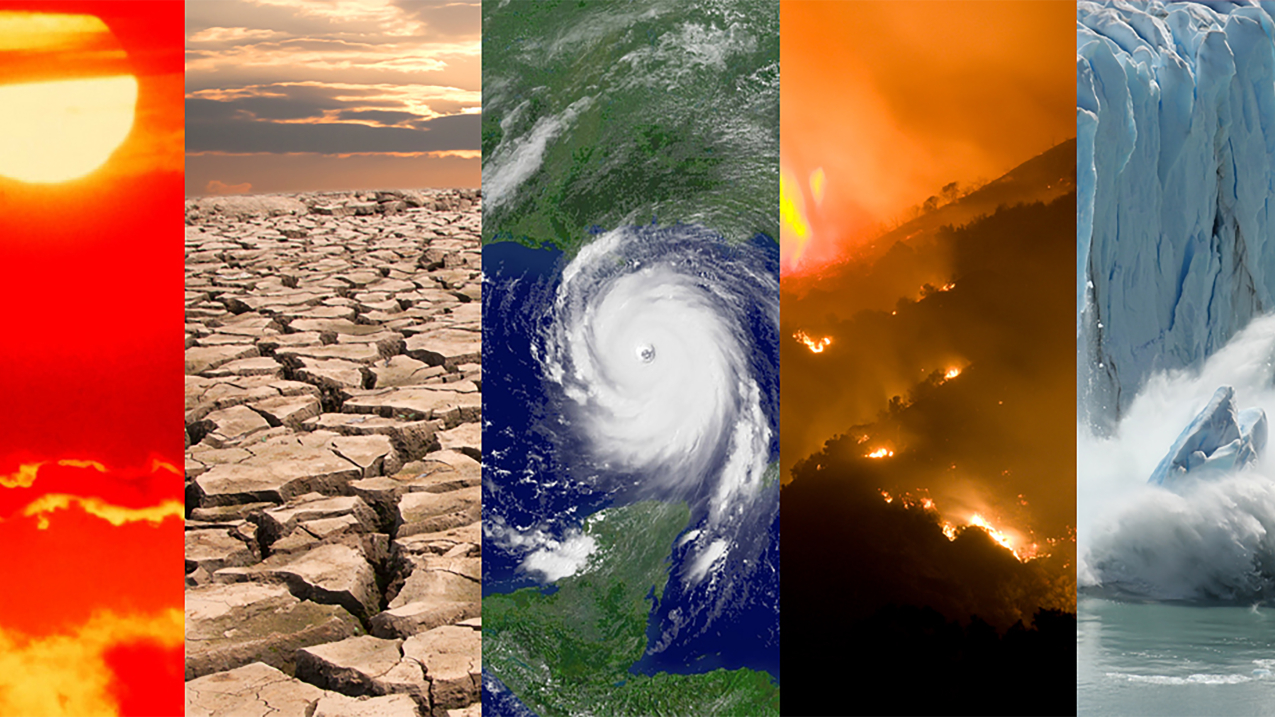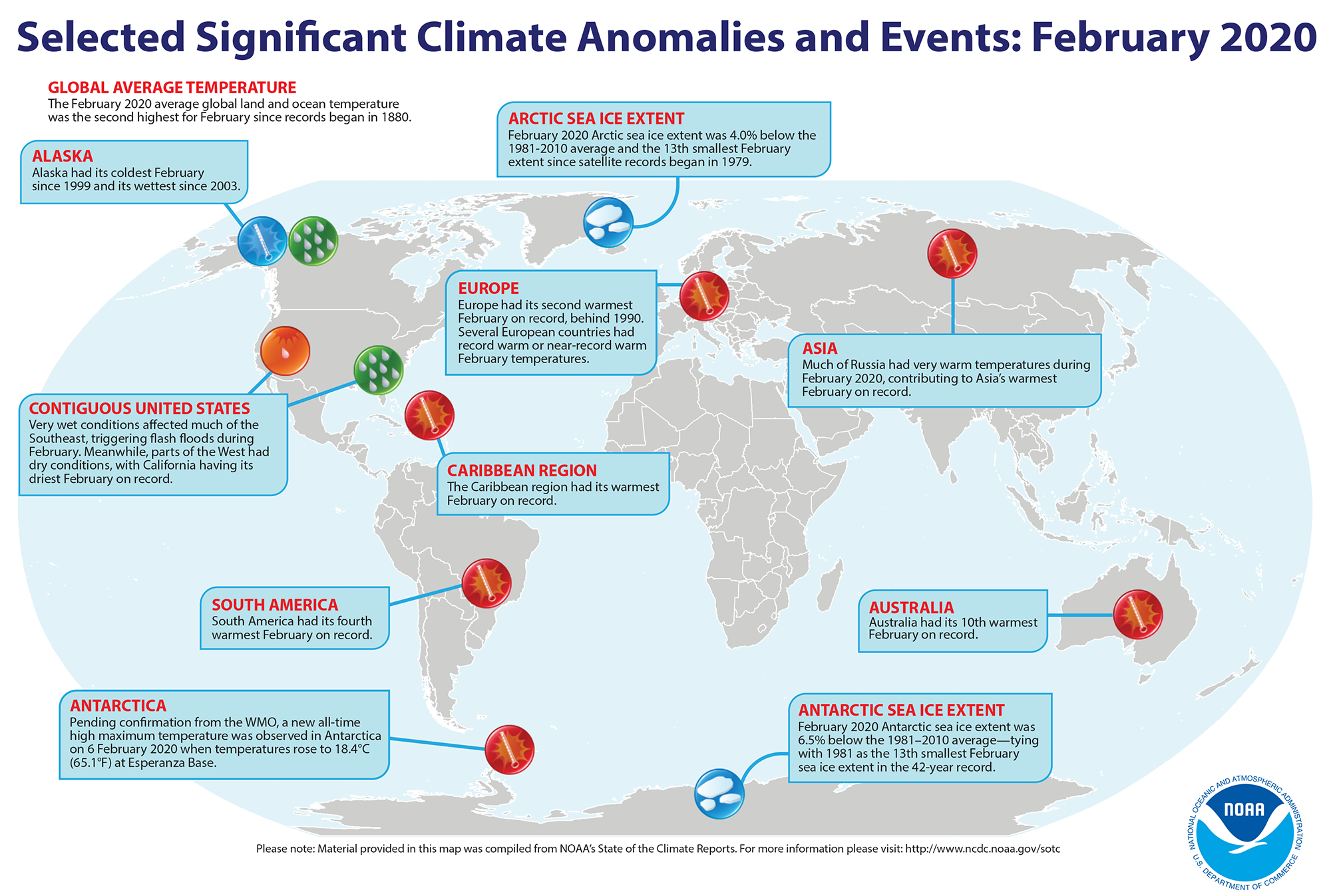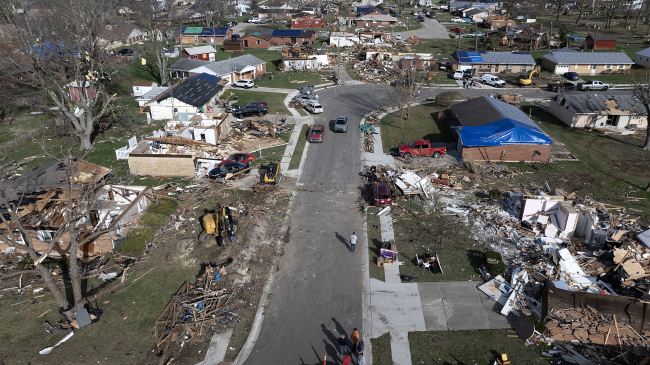
A collage of typical climate and weather-related events: heatwaves, drought, hurricanes, wildfires and changes in sea ice coverage. (Image credit: NOAA)
The planet sweated it out again last month, as February 2020 ranked as the second-hottest February in the 141-year global climate record, according to scientists at NOAA’s National Centers for Environmental Information.
In addition, meteorological winter hardly made an appearance in large parts of the Northern Hemisphere, as both Europe and Asia recorded their warmest winters ever.
Globally, both the season (December through February) and the year to date (January through February) ranked second hottest in recorded history.
Here’s more from NOAA’s latest monthly global climate report:
Climate by the numbers
February 2020
The average global land and ocean surface temperature for February 2020 was 2.11 degrees F (1.17 degrees C) above the 20th-century average and the second-highest on record behind 2016.
Earth’s 10 warmest Februarys have all occurred since 1998.
In addition, the global temperature departure from average for February was the highest monthly temperature departure without an El Niño present in the tropical Pacific Ocean, surpassing the previous record set in January.
Seasonal statistics and the year to date
For the season (December through February), it was the second-warmest winter on record for the Northern Hemisphere and the second-hottest summer ever recorded in the Southern Hemisphere. For both hemispheres, only the period of December 2015 through February 2016 was warmer.
The year to date (January and February 2020) global land and ocean surface temperature was 2.09 degrees F (1.16 degrees C) above the 20th-century average, which made it the second-warmest such period in the 141-year record behind the same period in 2016.

More notable climate events in this report
-
Parts of the globe sweltered in February: Both Asia and the Caribbean region had their warmest February on record. No land or ocean areas had record-cold February temperatures.
-
Sea-ice coverage ran below average at both poles: The month saw Arctic sea ice coverage at 4.0 percent below the 1981–2010 average, while coverage in the Antarctic was 6.5 percent below average. Still, Antarctica saw its highest February sea ice extent since 2015.
-
2020 is off to a balmy start: The Northern Hemisphere had its hottest January through February period since global records began in 1880. The Southern Hemisphere had its second-warmest such period, behind 2016.
More > Access NOAA’s latest climate report and download the images.
Media contact
John Bateman, (301) 713-9604



